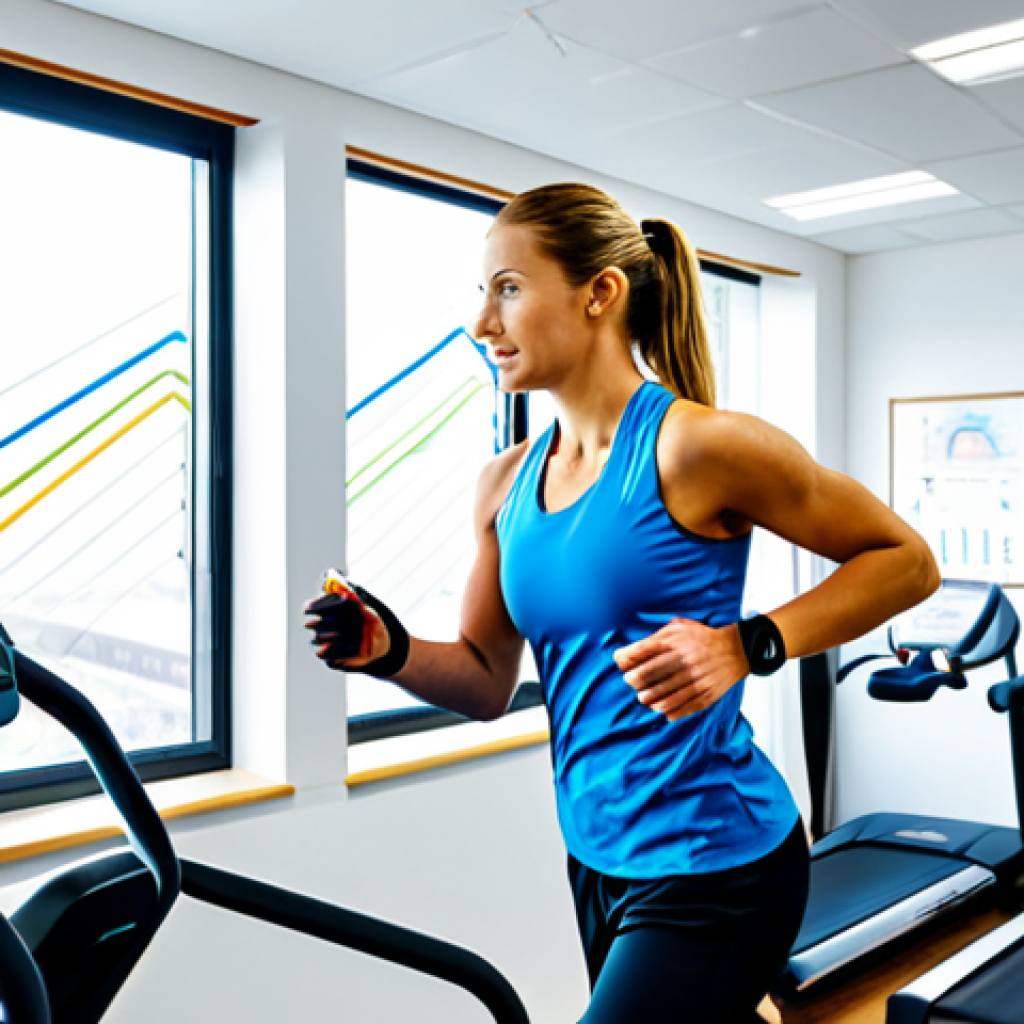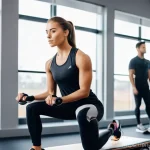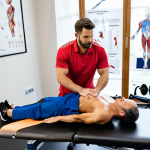The field of sports rehabilitation is in constant evolution, pushing boundaries to optimize athlete recovery and performance. From my perspective as someone deeply involved in observing rehabilitation programs, the trends lean heavily towards personalized medicine, using data analytics to tailor treatments to the individual.
Cutting-edge research explores advanced imaging techniques and regenerative therapies like PRP, with the exciting promise of faster healing. Moreover, the focus is shifting towards preventative strategies, understanding biomechanics and implementing customized training regimes to minimize injury risks.
The future looks bright, with VR and AI-driven tools set to transform assessment and rehabilitation protocols. Let’s delve deeper into these fascinating trends and see what the future holds for sports rehabilitation, shall we?
Embracing Personalized Rehabilitation Protocols
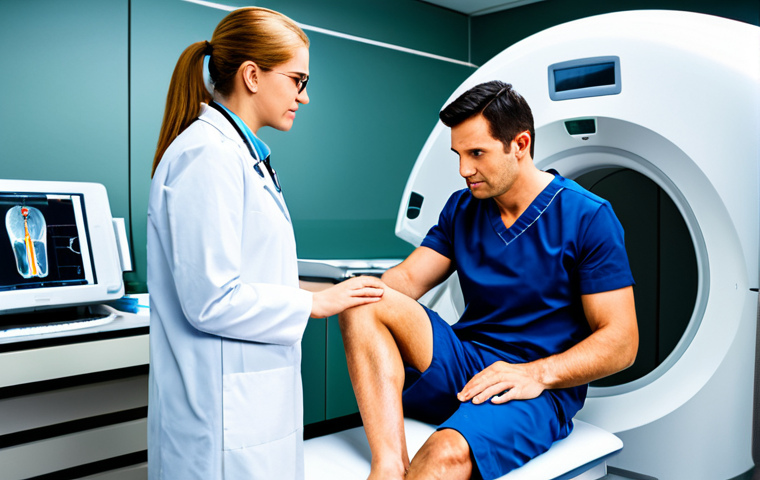
Forget the one-size-fits-all approach. These days, it’s all about digging deep into an athlete’s unique physiology and crafting a rehabilitation plan that’s as individual as their fingerprint. I remember talking to a rehab specialist who mentioned how they used to apply standard protocols, but now, they run comprehensive analyses – everything from genetic predispositions to metabolic rates – to fine-tune interventions. For instance, two athletes with similar hamstring injuries might require completely different recovery timelines and exercise progressions based on their individual recovery capabilities. This tailored approach not only accelerates healing but also minimizes the risk of re-injury, making it a win-win situation for everyone involved.
Data-Driven Decisions in Recovery
Data isn’t just for number crunchers; it’s become an integral part of sports rehabilitation. Wearable sensors, biomechanical assessments, and even psychological profiles contribute to a rich dataset that informs treatment strategies. Take, for example, GPS trackers that monitor an athlete’s movement patterns during training. By analyzing this data, therapists can identify potential risk factors and adjust training loads to prevent injuries. It’s pretty amazing how much we can learn from just tracking movement.
The Role of Genetic Testing
Genetic testing might sound like something out of a sci-fi movie, but it’s increasingly becoming a tool in sports rehabilitation. These tests can reveal predispositions to certain injuries, like ACL tears or tendon ruptures. Knowing this information allows therapists to proactively address weaknesses and implement preventative measures. I recall a presentation at a sports medicine conference where a researcher demonstrated how genetic insights informed customized strength training programs, leading to significant reductions in injury rates among participating athletes.
Advanced Imaging Technologies for Precise Diagnoses
We’ve come a long way from relying solely on X-rays for diagnosing sports injuries. Today, advanced imaging technologies like MRI and ultrasound provide incredibly detailed views of tissues, allowing for more accurate diagnoses and targeted treatment plans. I’ve personally seen how these technologies can make a huge difference in patient outcomes. For instance, a high-resolution MRI can detect subtle cartilage damage that might be missed on a standard X-ray, enabling early intervention and preventing further degeneration.
Ultrasound: Real-Time Visualization of Healing
Ultrasound imaging isn’t just for pregnant women anymore! In sports rehabilitation, it’s a powerful tool for monitoring tissue healing in real-time. Therapists can use ultrasound to visualize the formation of scar tissue, assess muscle fiber alignment, and even guide injections with pinpoint accuracy. I remember shadowing a sports physician who used ultrasound to track the healing progress of a torn Achilles tendon. The ability to see the tissue regenerating in real-time allowed them to adjust the rehabilitation protocol accordingly, leading to a faster and more complete recovery.
The Power of 3D Imaging
3D imaging is revolutionizing how we understand and treat complex sports injuries. Techniques like 3D MRI and CT scans provide a comprehensive view of bone and soft tissue structures, enabling surgeons to plan procedures with greater precision. For example, in cases of complex fractures, 3D imaging can help surgeons visualize the fracture fragments and plan the optimal approach for reconstruction. This leads to better surgical outcomes and faster rehabilitation times. I was impressed by a case where 3D imaging allowed surgeons to restore a fractured hip with remarkable accuracy, enabling the athlete to return to competition in record time.
Regenerative Therapies: Accelerating the Healing Process
The field of regenerative medicine holds immense promise for sports rehabilitation. Therapies like Platelet-Rich Plasma (PRP) and stem cell injections are designed to harness the body’s natural healing abilities to accelerate tissue repair and reduce pain. From what I have observed, these therapies can be particularly effective for treating chronic tendon injuries and osteoarthritis. In some cases, they can even offer an alternative to surgery.
Platelet-Rich Plasma (PRP) Injections
PRP involves injecting a concentrated solution of platelets – components of blood that contain growth factors – into injured tissues. These growth factors stimulate tissue repair and reduce inflammation. I’ve heard numerous accounts of athletes who have experienced significant pain relief and improved function after PRP injections for conditions like tennis elbow and plantar fasciitis. One athlete told me that PRP was a game-changer, allowing them to avoid surgery and get back on the field much sooner.
Stem Cell Therapy: A Glimpse into the Future
Stem cell therapy is still in its early stages, but it has the potential to revolutionize sports rehabilitation. Stem cells have the remarkable ability to differentiate into various types of cells, including cartilage, bone, and muscle. By injecting stem cells into damaged tissues, we may be able to regenerate lost tissue and restore function. While more research is needed, initial studies have shown promising results in treating conditions like cartilage defects and spinal cord injuries. I’m excited about the possibilities that stem cell therapy holds for the future of sports rehabilitation.
The Shift Towards Preventative Strategies
Why wait for an injury to happen when you can prevent it in the first place? That’s the driving force behind the shift towards preventative strategies in sports rehabilitation. By understanding biomechanics and identifying risk factors, therapists can implement customized training regimes and interventions to minimize the likelihood of injuries. I personally believe that this proactive approach is the key to keeping athletes healthy and performing at their best.
Biomechanical Assessments: Uncovering Hidden Risks
Biomechanical assessments involve analyzing movement patterns to identify imbalances and weaknesses that could predispose an athlete to injury. These assessments can include everything from gait analysis to jump landing tests. By identifying these risk factors, therapists can design targeted interventions to correct them. For example, an athlete with excessive pronation during running might be prescribed orthotics to improve foot alignment and reduce stress on the lower extremities. I’ve seen firsthand how biomechanical assessments can help athletes avoid injuries and improve their performance.
Customized Training Regimes: Building Resilience
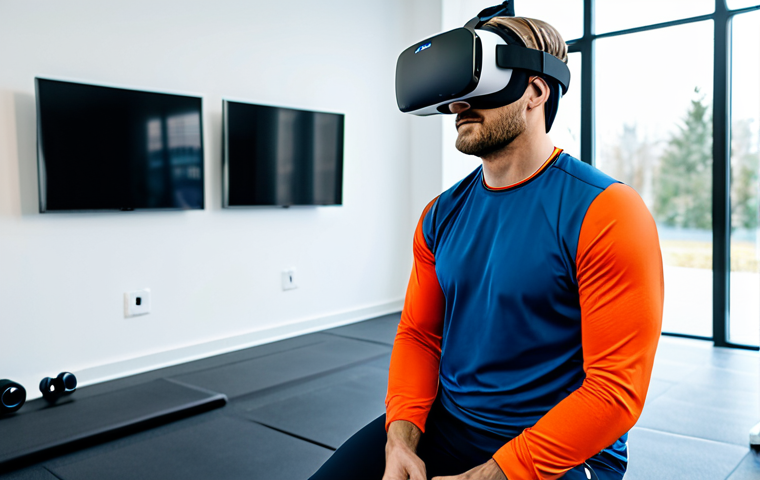
No two athletes are exactly alike, so why should they follow the same training program? Customized training regimes take into account an athlete’s individual strengths, weaknesses, and injury history to create a program that is tailored to their specific needs. These programs often incorporate elements of strength training, flexibility exercises, and proprioceptive training to build resilience and reduce the risk of injuries. I was impressed by a coach who designed a customized training program for a basketball player with a history of ankle sprains. The program focused on strengthening the ankle muscles and improving balance, leading to a significant reduction in the frequency of sprains.
Leveraging Virtual Reality (VR) and Artificial Intelligence (AI)
The integration of VR and AI into sports rehabilitation is nothing short of revolutionary. VR can create immersive environments for rehabilitation exercises, making the process more engaging and effective. AI, on the other hand, can analyze vast amounts of data to personalize treatment plans and predict injury risks. I think these technologies are poised to transform the way we approach sports rehabilitation in the years to come.
VR for Immersive Rehabilitation
VR can transport athletes to virtual environments where they can perform rehabilitation exercises in a safe and controlled setting. For example, an athlete recovering from a knee injury might use VR to simulate walking on uneven terrain or performing sport-specific movements. The immersive nature of VR can make rehabilitation more engaging and motivating, leading to better outcomes. I was fascinated by a study that showed that VR-based rehabilitation was more effective than traditional rehabilitation for improving balance in patients with stroke.
AI-Driven Personalized Treatment Plans
AI can analyze vast amounts of data – including medical history, training logs, and biomechanical assessments – to create personalized treatment plans that are tailored to each athlete’s unique needs. AI algorithms can also predict injury risks and identify athletes who might benefit from preventative interventions. I’ve read about AI systems that can predict ACL injuries with remarkable accuracy, allowing therapists to implement preventative measures before the injury occurs.
The Growing Importance of Mental Health in Recovery
It’s easy to focus solely on the physical aspects of sports rehabilitation, but mental health is just as important. Injuries can take a toll on an athlete’s mental well-being, leading to anxiety, depression, and decreased motivation. Recognizing and addressing these mental health challenges is crucial for a successful recovery. I’ve noticed a growing awareness of the importance of mental health in sports rehabilitation, with more therapists incorporating psychological support into their treatment plans.
The Role of Sports Psychologists
Sports psychologists can play a vital role in helping athletes cope with the emotional challenges of injury. They can provide counseling, teach coping strategies, and help athletes regain their confidence. I recall an athlete telling me that working with a sports psychologist helped them overcome their fear of re-injury and return to competition with renewed enthusiasm. It’s clear that addressing the mental aspects of injury can significantly impact recovery outcomes.
Mindfulness and Meditation Techniques
Mindfulness and meditation techniques can help athletes manage pain, reduce stress, and improve focus during rehabilitation. These techniques involve focusing on the present moment and accepting thoughts and feelings without judgment. I’ve heard from therapists who have successfully used mindfulness and meditation to help athletes cope with chronic pain and anxiety. It’s amazing how powerful these simple techniques can be for promoting mental and emotional well-being.
| Trend | Description | Benefits |
|---|---|---|
| Personalized Rehabilitation | Tailoring treatment plans to individual needs based on data analytics. | Faster healing, reduced risk of re-injury. |
| Advanced Imaging Technologies | Using MRI and ultrasound for detailed diagnoses. | More accurate diagnoses, targeted treatment plans. |
| Regenerative Therapies | Employing PRP and stem cell injections to accelerate tissue repair. | Reduced pain, faster recovery, potential alternative to surgery. |
| Preventative Strategies | Implementing biomechanical assessments and customized training. | Minimized injury risks, improved performance. |
| VR and AI Integration | Using VR for immersive rehabilitation and AI for personalized treatment. | More engaging rehabilitation, personalized treatment plans, predicted injury risks. |
| Mental Health Support | Addressing mental health challenges during recovery. | Improved coping strategies, increased confidence, successful return to competition. |
Wrapping Up
As we’ve explored, the world of sports rehabilitation is rapidly evolving, embracing personalized approaches, cutting-edge technologies, and a holistic understanding of the athlete. It’s exciting to see how these advancements are helping athletes recover faster, prevent injuries, and return to competition stronger than ever. The future of sports rehab is bright, and I’m eager to witness the continued innovation and progress in this dynamic field.
Handy Tips to Keep in Mind
1. Always consult with qualified healthcare professionals for personalized rehabilitation plans.
2. Stay informed about the latest advancements in sports medicine and rehabilitation.
3. Prioritize preventative strategies to minimize the risk of injuries.
4. Remember that mental health is an integral part of the recovery process.
5. Embrace a data-driven approach to track progress and optimize treatment plans.
Key Takeaways
Sports rehabilitation is moving towards personalized, data-driven approaches that focus on both physical and mental well-being. Advanced imaging and regenerative therapies are accelerating healing, while VR and AI are revolutionizing treatment plans. Prioritizing preventative strategies is crucial for minimizing injury risks and maximizing performance.
Frequently Asked Questions (FAQ) 📖
Q: You mentioned personalized medicine is becoming a big deal in sports rehab. But how exactly are they tailoring treatments to the individual athlete now? It sounds pretty futuristic!
A: Oh, it’s not just futuristic, it’s happening right now! From what I’ve seen observing rehab programs, it starts with really in-depth assessments. Think beyond just the basic range of motion tests.
We’re talking motion capture technology to analyze movement patterns, force plates to measure ground reaction forces, and metabolic testing to understand how their body responds to exercise.
Then, data analytics comes into play. They crunch all that data to identify specific weaknesses, imbalances, or movement dysfunctions that are unique to that athlete.
For example, one athlete might overpronate, causing knee pain. Another might have a weak core, leading to lower back issues. Based on this info, a customized rehab plan is designed, focusing on targeted exercises and interventions to address those specific problems.
It’s like having a GPS for recovery, guiding the athlete back to peak performance in the most efficient way possible.
Q: You also mentioned VR and
A: I. Honestly, that sounds a bit like science fiction. How could those technologies realistically improve sports rehab?
A2: I know, right? It sounds like something out of a Marvel movie! But trust me, it’s surprisingly practical.
I’ve seen VR used in a few pilot programs, and the potential is huge. Imagine an athlete recovering from an ACL injury. They can use VR to simulate game situations and practice cutting and pivoting movements in a controlled, safe environment before they even step back on the field.
This helps rebuild their confidence and proprioception (body awareness) without the risk of re-injury. AI is being used to analyze movement data in real-time and provide instant feedback to athletes.
Think of it as a personal coach, but instead of yelling at you, it gives you precise instructions on how to improve your technique. Plus, AI algorithms can predict injury risk based on an athlete’s training load and biomechanics, allowing coaches and therapists to adjust training plans proactively.
It’s all about optimizing performance and preventing injuries before they happen.
Q: Advanced imaging and regenerative therapies like PRP sound promising for faster healing. But are these treatments really effective, or is it just hype?
A: nd are they accessible to the average athlete or only for pros? A3: That’s a fair question. There’s definitely some hype around regenerative therapies, but also a lot of promising research.
From what I’ve gathered, PRP (Platelet-Rich Plasma) and other similar therapies like stem cell injections are showing some positive results in accelerating the healing of tendon and ligament injuries.
The idea is that these treatments use the body’s own healing mechanisms to repair damaged tissue. However, it’s important to note that these treatments aren’t magic bullets, and they don’t work for everyone.
The effectiveness can depend on the severity of the injury, the athlete’s overall health, and the specific protocol used. Accessibility is also a concern.
These treatments can be quite expensive and may not be covered by insurance. While professional athletes often have access to the latest and greatest therapies, they may be less readily available to amateur or recreational athletes.
The good news is that prices are gradually coming down, and as more research is conducted, we’ll have a better understanding of who benefits the most from these treatments.
It’s a rapidly evolving field, so stay tuned!
📚 References
Wikipedia Encyclopedia
구글 검색 결과
구글 검색 결과
구글 검색 결과
구글 검색 결과
구글 검색 결과
